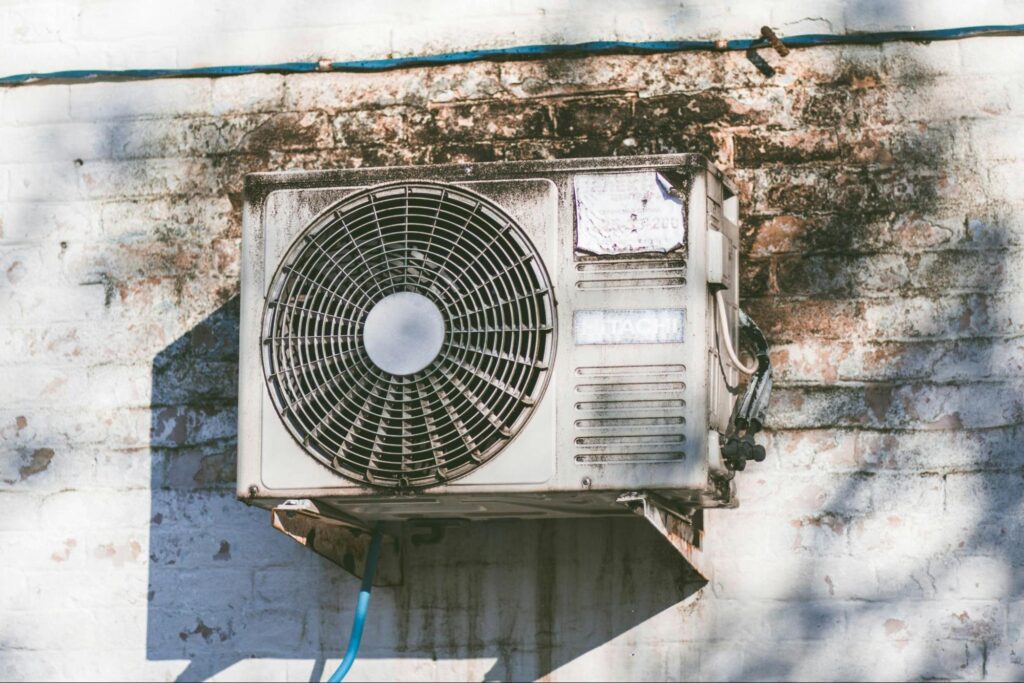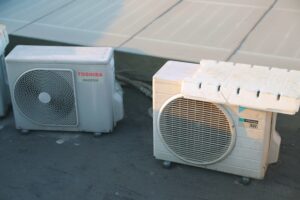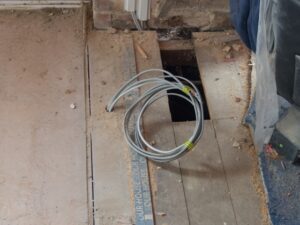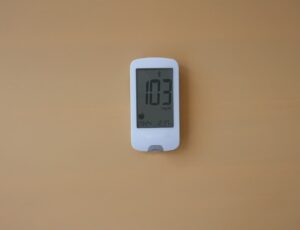Is your air conditioner failing to keep your home cool, and you’re wondering if the AC condenser can be repaired or if a complete replacement is in order?
You’re not alone!
The good news is that many common AC condenser issues can indeed be repaired, saving you time and money. From leaks to electrical problems or even blockages, there’s often a solution to restore your system to peak performance.
Ignoring AC issues can lead to bigger problems, higher utility bills, and uncomfortable indoor temperatures. That’s why it’s so important to address the situation promptly. But how do you know what’s best for your system?
That’s where experienced professionals like Excel Mechanical come in. Whether it’s a minor leak or a major electrical fault, our team is dedicated to providing quality HVAC solutions tailored to your needs and budget.
We don’t just fix problems—we provide peace of mind. With our expertise, we’ll assess your AC system and guide you through the best options, ensuring your home stays cool without unnecessary stress.
After all, choosing the right service provider can make all the difference when it comes to the health of your AC system!
In this blog, we will cover:
- How the AC condenser functions and why it’s so vital for your system.
- The most common issues that can damage your AC condenser and how to spot them.
- What to look for in a repair service and how professionals can make a difference.
Here is all you need to know!
Understanding AC Condenser Functionality
Your air conditioning system relies on the AC condenser to remove heat from your home. It’s vital to transform refrigerant from gas to liquid by cooling it, allowing your AC to provide a comfortable temperature.
The condenser is usually located outside your home. It comprises several components, including the compressor, condenser coils, and fan. These parts work together to expel heat.
Key Functions of the Condenser:
- Heat Transfer: It moves heat from inside to outside.
- Condensation: Converts refrigerant from gas to liquid.
- Cooling: Helps in cooling the refrigerant for circulation.
Maintaining the efficiency of your condenser is essential. Ensure it stays clean and free of debris. Regular check-ups prevent issues like leaks or blockages that impair performance.
Common Causes of AC Condenser Damage
Damage to your AC condenser can disrupt your cooling system and lead to costly repairs.
Several factors can cause this damage, but three common causes are debris, corrosion, and electrical failure in components. Understanding these can help you take preventive measures and maintain your system effectively.
Debris and Physical Impact
Outdoor units are exposed, making them vulnerable to debris.
Leaves, branches, and dirt can accumulate and obstruct airflow. This blockage forces your condenser to work harder, leading to overheating or compressor failure. Hail or stones might physically impact the unit, causing dents or damaging the fins and coils.
Regularly clearing debris from around the unit can help maintain its performance.
Corrosion and Wear
Exposure to weather elements can lead to corrosion.
Moisture from rain or humidity may cause rust on metal parts. Over time, this weakens the structure, compromising the condenser’s efficiency. Chemical fumes, like those from certain cleaning agents, can also contribute to corrosion.
Consider using a cover, especially in harsh weather, to minimize wear and schedule regular maintenance.
Component Electrical Failure
Electrical issues often arise from faulty wiring or worn-out components. These include capacitors and contactors essential for starting and running the condenser.
Electrical surges or overheating may damage these parts. When components fail, the unit may not start or function optimally. Regularly checking and replacing worn or faulty electrical components can prevent major failures.
In each scenario, timely intervention can prevent further damage and maintain comfort. Our team ensures your system efficiently meets your cooling demands, whether for residential or commercial needs.
Diagnosing AC Condenser Issues
Diagnosing issues with your AC condenser involves a few crucial steps to ensure it operates efficiently. A thorough inspection, leak detection, and performance testing are key components in identifying and fixing problems.
Visual Inspection
Start by performing a visual inspection of the condenser unit.
Look for any signs of damage, such as bent fins, broken fans, or debris blocking airflow. Check the condition of the coil for dirt or grime, which can affect performance. Pay attention to electrical connections and wiring, ensuring there are no frayed or damaged areas.
Regular visual checks help catch potential problems before they become serious. This step can be done periodically to maintain your system’s efficiency and longevity.
Addressing visible issues early can save time and money on larger repairs.
Leak Detection
Leaks in the condenser can reduce cooling efficiency and increase energy costs.
You can detect refrigerant leaks by using specialized tools like electronic leak detectors. Alternatively, soapy water can be applied to suspected areas; bubbles will form where leaks exist.
Listening to unusual hissing sounds when the unit is off can signal leaks. Low refrigerant levels can cause the cooling system to perform poorly and strain other components.
Detecting and repairing leaks early can prevent more extensive, more costly repairs.
Performance Testing
Testing your AC condenser’s performance is crucial to identifying inefficiencies.
Start by checking the temperature of air coming from vents compared to room temperature. This can reveal if the system is cooling effectively. Measure the power consumption; a spike can indicate inefficiencies or malfunctions within the unit.
Performance testing can also involve checking pressure levels in the system to ensure they match manufacturer recommendations. Any deviations can signal potential issues that need addressing.
It helps to identify if the condenser is operating at its best capacity, ensuring comfort and energy efficiency in your space.
Repair Versus Replacement Analysis
When faced with a faulty AC condenser, the decision between repair and replacement is crucial. Several factors need to be considered to make the right choice.
Factors to Consider:
- Age of the Unit: A replacement might be more cost-effective if your condenser is over 10-15 years old.
- Repair Costs: High repair costs, especially if they approach the price of a new unit, might not be worth it.
- Energy Efficiency: Older models are less energy-efficient. A new condenser could lower your energy bills.
Signs You Might Need a Replacement:
- Frequent breakdowns suggest it’s time for a new unit.
- If the condenser uses outdated refrigerant, finding replacements can be expensive.
Cost Comparison:
| Factor | Repair | Replacement |
| Initial Cost | Generally lower | Higher upfront |
| Longevity | Temporary solution, may recur | Long-term solution |
| Efficiency | May not improve | Offers better energy savings |
Choosing between repair and replacement can be daunting—Trust Excel Mechanical to guide you. We strive for exceptional quality in all our services, ensuring you get the optimal system for your home or business.
Professional Repair Techniques
Understanding professional repair techniques is key to efficiency when dealing with a broken AC condenser. Addressing leaks, component damage, and electrical issues are crucial steps in the repair process.
Sealing and Welding Leaks
An AC condenser leak can lead to decreased performance and higher utility bills.
Sealing involves refrigerant sealants to close small leaks, while welding is used for more significant damage. Proper welding requires skill to ensure the repair is durable and doesn’t affect the system’s efficiency. Conducting a thorough inspection to identify all leaks before proceeding is vital.
Professional technicians have the tools and expertise to assess and fix these issues, restoring the condenser’s performance.
Replacing Damaged Components
Condenser components such as fans, coils, and motors are prone to wear and damage. Repairing or replacing these elements is often necessary when they’re beyond simple repair.
Specialized tools are used to remove faulty parts, and installation of new components should be precise to avoid future problems. Technicians may also fine-tune settings for optimal performance.
Electrical Repairs and Reconnections
Electrical issues, ranging from faulty wiring to malfunctioning control boards, can affect the entire AC system. Technicians first conduct an electrical diagnosis to pinpoint problem areas.
Steps may include repairing connections, replacing wires, or resetting control systems. Proper handling of electrical components is crucial to prevent further damage or hazards.
DIY Repair Considerations
When considering DIY repair for an AC condenser, it is crucial to understand the tools and skills required and the safety precautions you’ll need to follow. Proper preparation and adherence to safety measures can make the process smoother and prevent potential hazards.
Tool and Skill Requirements
Repairing an AC condenser yourself requires the right tools and a basic mechanical aptitude.
Essential tools include a multimeter to check electrical circuits, supportive gloves, and screwdrivers. You’ll also need an adjustable wrench and possibly a capacitor tester. Familiarity with using these tools is essential for a successful repair.
It’s crucial to have a basic understanding of how AC systems work. This includes cleaning filters and identifying common issues like blockages or refrigerant leaks.
Following detailed instructions accurately is equally important to avoid causing more damage.
Safety Precautions
Safety should always be your top priority when working on an AC condenser.
- Before starting any repairs, make sure the unit is completely turned off and disconnected from the power source to avoid electrical shocks.
- Always wear protective gloves and goggles to shield against sharp components and spills.
- Working with refrigerants can be hazardous. It’s essential to ensure the area is well-ventilated and to handle refrigerants carefully.
If you encounter any issues you’re unsure about, it’s best to consult professionals.
Maintaining Your AC Condenser Post-Repair
Proper maintenance of your AC condenser post-repair ensures it runs smoothly and lasts longer.
Regular cleaning helps keep the condenser free of dirt and debris. Rinse the fins with a gentle spray from a garden hose, being careful not to bend them. Schedule check-ups with HVAC professionals to inspect your system. This includes electrical connections, refrigerant levels, and overall system performance.
Monthly Maintenance Checklist:
- Inspect: Check for leaks or unusual noises.
- Clean: Remove debris around the unit.
- Test: Run the system to ensure it cools effectively.
Using a programmable thermostat can reduce wear on your condenser. Set it to a higher temperature when you’re not home, preventing the system from running unnecessarily.
Ensure good airflow by regularly checking and changing your air filters. Clean vents and keep furniture or other items from blocking them.
When to Consult a Professional
If your AC condenser is malfunctioning, professionals can help.
Many issues need expert skills that only trained technicians possess.
- One sign to look for is unusual noise from the condenser. Grinding, banging, or screeching might indicate serious problems with the fan or motor. In such cases, get help to prevent further damage.
- Water pooling around the unit or irregular cooling is also concerning. This could signal refrigerant leaks, which experts best handle to ensure safety and proper repairs.
At Excel Mechanical, we are well-equipped to handle all AC issues. We prioritize exceptional quality and value, tailoring solutions to fit your needs and budget. Regarding HVAC and plumbing services, our professionals ensure top-notch service for residential and commercial properties.
Don’t hesitate to contact us when you encounter complex problems or safety risks. Proper repair and maintenance can extend the life of your system and enhance comfort in your home or business.
Frequently Asked Questions
When dealing with AC condenser repairs, it’s natural to have questions. After all, it’s not something you want to put off—your comfort and your home’s energy efficiency depend on it! Here are some of the most common questions people have about their AC condensers:
How much does it typically cost to repair an AC condenser?
The cost to repair an AC condenser can range from moderate to high, depending on the extent of the damage. Minor issues, like cleaning and fixing leaks, might be more affordable. Extensive damage could be costly.
What are common signs that an AC condenser needs repair?
Common signs include unusual noises, leaks, or reduced cooling efficiency. You might also notice the air conditioner running longer than usual to maintain the desired temperature.
Is it more cost-effective to repair or replace a damaged AC condenser?
Deciding whether to repair or replace your AC condenser involves considering the repair costs and the unit’s age. If your condenser is old and repairs are frequent or expensive, replacing it might be more cost-effective in the long term.
What are the steps involved in repairing an AC condenser?
Repairing an AC condenser typically involves identifying the problem, such as leaks or faulty components, and addressing it. This might include cleaning the unit, replacing damaged parts, or refillingthe refrigerant.
What factors contribute to the failure of an AC condenser?
Several factors can lead to a condenser’s failure, including lack of maintenance, exposure to outdoor elements, or overuse. Regular maintenance, like checking the refrigerant levels and cleaning components, can help prevent failure.
How long does an AC condenser usually last before it needs repairs or replacement?
An AC condenser typically lasts 10 to 15 years, depending on usage and maintenance. Regular servicing by professionals like Excel Mechanical can extend its lifespan and ensure optimal performance.




